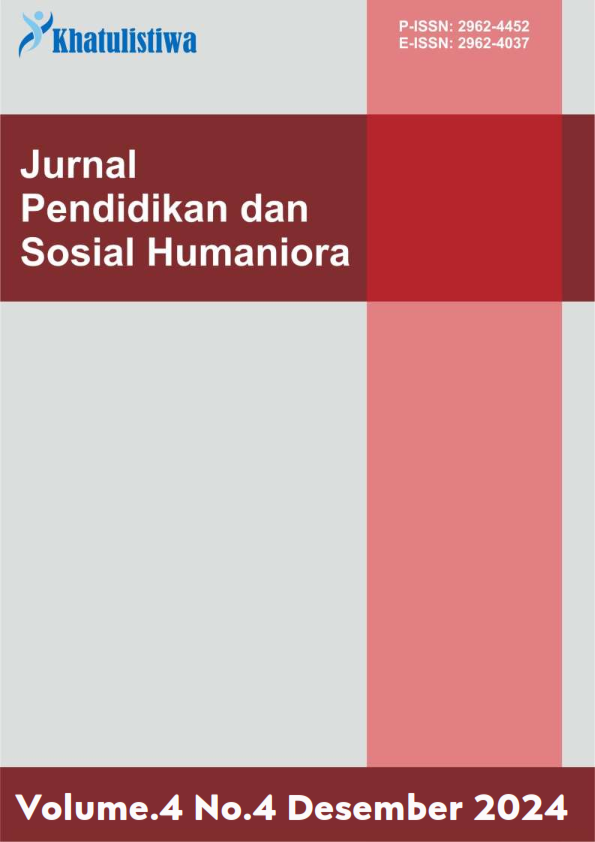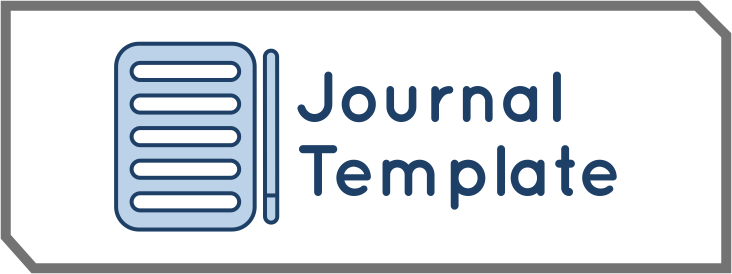Peningkatan Kemampuan Membaca Menggunakan Metode Struktur Analitik Sitentik (SAS) pada Pembelajaran Bahasa Indonesia Kelas II MI Diponegoro
DOI:
https://doi.org/10.55606/khatulistiwa.v4i4.7316Keywords:
Reading, Methods, SASAbstract
The objectives of this study include: To determine and describe the improvement of reading ability and through the method of Synthetic Analytical Structure (SAS) of Indonesian Lessons of students; and to determine and describe the obstacles faced by teachers in improving reading ability through the method of Synthetic Analytical Structure (SAS) of Indonesian lessons of class II students of MI Diponegoro Kalikudi. The type of research used is field research with a qualitative approach. Based on the results of the research that has been done, it can be concluded that: 1) Improving the ability to read Indonesian lessons through the Synthetic Analytical Structure (SAS) method in class II of MI Diponegoro, namely by preparing planning, implementing learning and evaluating learning. The planning stage includes preparing all learning tools such as RPP, while the implementation of learning includes learning activities in the classroom, and the final activity is evaluation, namely to see the extent to which students understand the learning that is being studied in this case is reading; the obstacles faced by lower class students, in this case class II, are that students have not been able to follow reading and writing learning well from the constraints of the SAS method, including: 1). The SAS method takes more time and must be more creative; 2). Causes children to memorize readings without recognizing letters; 3). Requires many facilities that must be prepared for the implementation of this SAS learning method for certain schools is considered difficult; 4). This SAS Learning Method tends to be quite difficult for children to be taught by teachers.
References
Alvianto, V. (2019). MK Pengembangan media berbasis TI_Vicky Alvianto (Membaca Nyaring) (pp. 1–14).
Dianti. (2017). Angewandte Chemie International Edition, 6(11), 951–952., 5–24. http://repo.iain-tulungagung.ac.id/5510/5/BAB%202.pdf
Fadilah, A., Nurzakiyah, K. R., Kanya, N. A., Hidayat, S. P., & Setiawan, U. (2023). Pengertian media, tujuan, fungsi, manfaat dan urgensi media pembelajaran. Journal of Student Research (JSR), 1(2), 1–17.
Farhurohman, O. (2019). Pengembangan model bimbingan belajar membaca berbasis struktural analitik sintetik (SAS) di Madrasah Ibtidaiyah. Elementary, 7(1), 115–136.
Harras, K. A. (1995). Membaca: Minat baca masyarakat kita. Mimbar Bahasa dan Seni, 1(1), 56.
Hasan, M., Milawati, Darodjat, Khairani, H., & Tahrim, T. (2021). Media pembelajaran. Tahta Media Group.
Jabir, A. (2020). Application of SAS method in improving beginning reading ability in elementary school. Social, Humanities, and Educational Studies (SHEs): Conference Series, 3(3), 1812–1818.
Kusumastuti, A. (2019). Peningkatan keterampilan membaca permulaan menggunakan metode SAS (Struktural Analitik Sintetik). Jurnal Pendidikan Guru Sekolah Dasar, 19, 2019.
Maimana, Nurhaswinda, & Rizal, S. M. (2021). Penerapan metode SAS untuk meningkatkan kemampuan membaca permulaan siswa kelas I sekolah dasar. Jurnal Edusmaspul, 5(2), 166–172. https://ummaspul.e-journal.id/maspuljr/article/download/2016/632
Mudinillah, A., Islam, A., Batusangkar, N., & Batusangkar, S. A. P. (2016). Manfaat media pembelajaran berbasis aplikasi Kinemaster terhadap hasil belajar IPA siswa SDN 25 Tambangan.
Nugraha, S., Heryanti, Y. Y., & Abidin, Y. (2023). The factors that affect the understanding of reading in elementary school. Jurnal EDUCATIO: Jurnal Pendidikan Indonesia, 9(2), 920. https://doi.org/10.29210/1202322942
Nurani, R. Z., Nugraha, F., & Mahendra, H. H. (2021). Analisis kesulitan membaca permulaan pada anak usia sekolah dasar. Jurnal Basicedu, 5(3), 1462–1470. https://doi.org/10.31004/basicedu.v5i3.907
Patiung, D. (2016). Membaca sebagai sumber pengembangan intelektual. Al Daulah: Jurnal Hukum Pidana dan Ketatanegaraan, 5(2), 352–376. https://doi.org/10.24252/ad.v5i2.4854
Puspitarini. (2018). Struktural analitik sintetik sebagai metode untuk meningkatkan keterampilan membaca siswa sekolah dasar. Dirasa, 2(6), 65–70.
S.H., P. R. H. S. (2018). Pedoman sertifikasi bagi guru pesantren muadalah dalam jabatan. Komplek Percetakan Al Qur’anul Karim Kepunyaan Raja Fahd.
Suleman, D., Hanafi, Y. R., & Rahmat, A. (2021). Meningkatkan kemampuan siswa membaca permulaan melalui metode scramble di kelas II SDN 3 Tibawa Kabupaten Gorontalo. Aksara: Jurnal Ilmu Pendidikan Nonformal, 7(2), 713–726. https://doi.org/10.37905/aksara.7.2.713-726.2021
Syifa Faujiah, L. I. M., & M. U. (2021). Upaya meningkatkan kemampuan membaca permulaan dengan menggunakan media kartu kata pada pelajaran Bahasa Indonesia. Prosiding Seminar Nasional Pendidikan STKIP Kusuma Negara III, 165–169. http://jurnal.stkipkusumanegara.ac.id/index.php/semnara2020/article/view/1294
Downloads
Published
How to Cite
Issue
Section
License
Copyright (c) 2024 Khatulistiwa: Jurnal Pendidikan dan Sosial Humaniora

This work is licensed under a Creative Commons Attribution-ShareAlike 4.0 International License.








